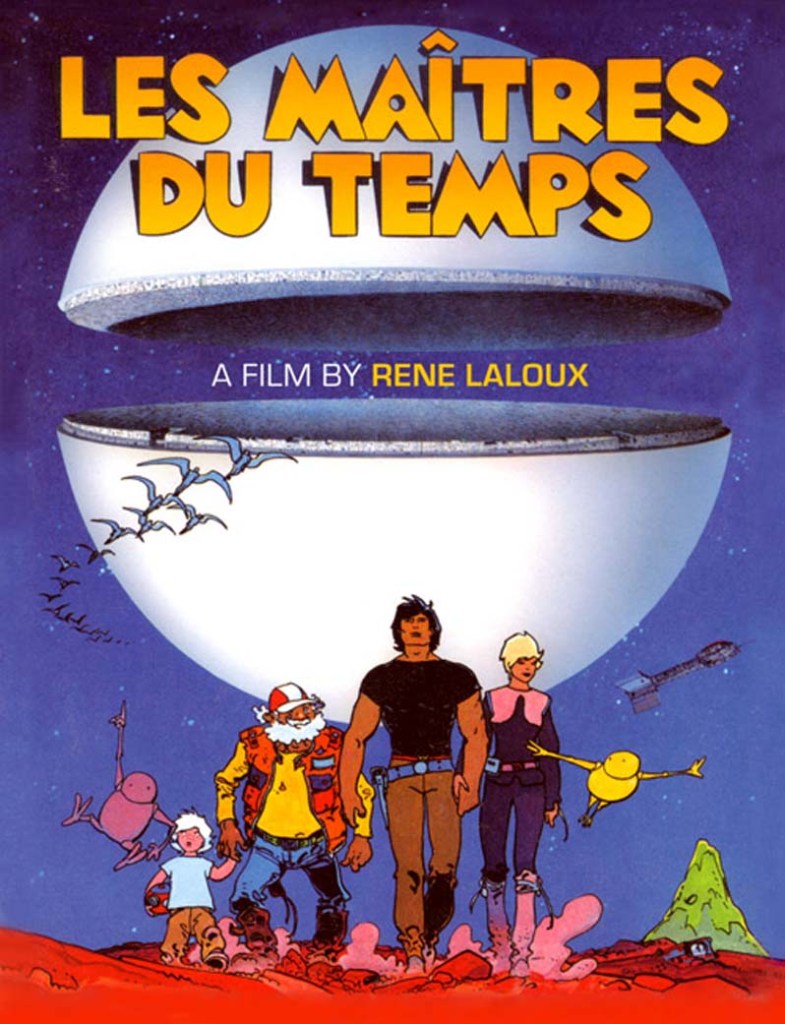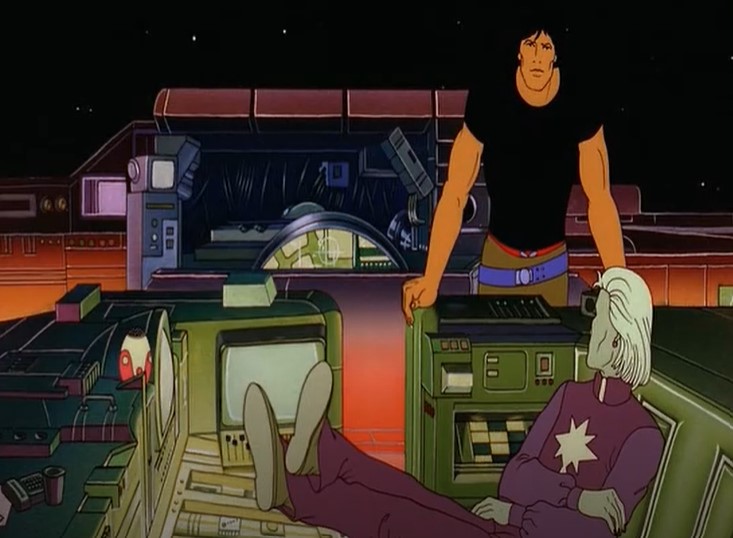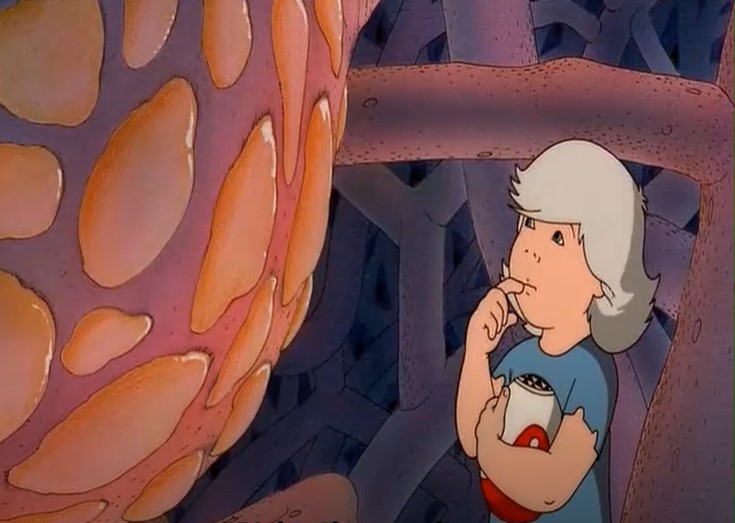
The Masters of Time [1982] – ★★★★
French director René Laloux is known for mind-bending French animation Fantastic Planet (1973), which he made in collaboration with Roland Topor, but after its international success he also made two other animations – The Masters of Time (1982) and Gandahar (1987). The Masters of Time is a Franco-Hungarian production, and a joint effort between Laloux and French comic artist Mœbius. Based on the 1958 science fiction novel L’Orphelin de Perdide (The Orphan of Perdide) by Stefan Wul, the animation tells of a crew of space travellers, Jaffar, Belle and picked up criminal-on-the-run Prince Matton, who lose one of their members, Claude, on planet Perdide. However, Claude’s little boy Piel is still safe and sound, and the only communication with the infant is a microphone transmitter, which Piel starts calling “Mike”. As Jaffar and Belle try to reach Perdide before Piel comes to any trouble, they get assistance from old space sailor Mr. Silbad, but do not even realise the trouble that Prince Matton plans to cause nor what the inhabitants of the nearest planet, Gamma 10, have in store for the crew as their religion emphasises “unity” at all cost.


The Masters of Time’s plot certainly arouses interest as we follow Piel, a little orphaned boy, who starts exploring one strange planet all on his own. Piel represents the vulnerability and innocence at the centre of one potentially dangerous environment, and time is running out for Jaffar and Belle to save Piel’s life as planet Perdide is home to some potentially dangerous creatures, including hornets. Seeing it in this light, The Masters of Time may remind of another animation – Soviet The Mystery of the Third Planet (1981), which, incidentally also has one inquisitive young child at its plot centre – girl Alice, who is being cared for by two adults (but no mother in sight) while on an inter-planetary journey. And, as its Soviet counterpart, The Masters of Time’s intense story often gives way to much humour, in this case largely provided by two alien telepathic “gnomes” named Yula and Jad in the story. These two are lovable little creatures who are always trying to figure out humans around them, but not always successfully. They do have access to their thoughts, but they also often have trouble making sense of this “secret” information they receive.
Like Japanese animation, French works in this genre often have certain ambiguousness and otherworldliness at their core, and The Masters of Time is no different. The winged entities of Gamma 10, and their spirituality, as well as the constantly “diffused” evil in this story will certainly leave the audience intrigued, and that is perhaps why these older animations will always have their devoted cult following. Their creators often had to compensate all the visual deficiencies with much meaning in story-lines and nuanced characters. On the other hand, many present-day animations, with their boundless visual potential, have stereotypical characters, as well as predictable and forgettable story-lines.


Although The Masters of Time is not as “psychedelic” in its presentation as Fantastic Planet, nor its story is as thought-provoking, it does have one thing that Fantastic Planet does not and that is an incredible twist. The animation has the kind of a twist which one will ponder long after the film’s ending, and it is also the kind of a twist which the audience will either totally love or perhaps totally dislike – it will certainly not leave anyone indifferent, and the hint may be in the animation’s title.
Overall, ahead of its time in its character depiction and theme that focuses on celebrating diversity, The Masters of Time is a fun, exciting animation piece, which is also surprisingly “balanced”: it has its moments full of thrilling action, but also instances of quiet contemplation, comedy, and even romance. Even if its presentation cannot presently compete with the visuals of today’s modern animatory works, its twist and the surreal imagery provided by Mœbius contribute to making it a very noteworthy entry in the history of French animation.
One Comment Add yours